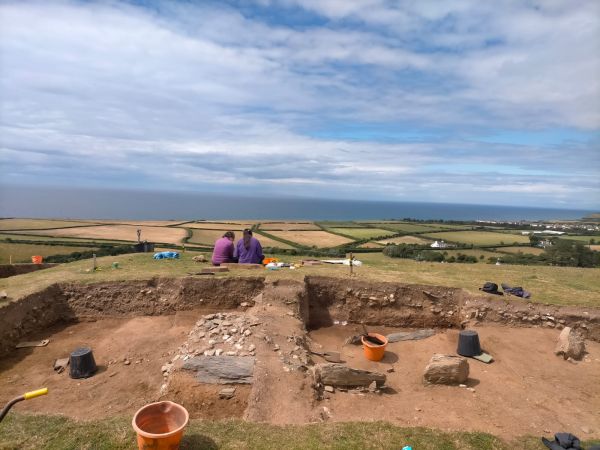The Isle of Man is the only entire nation to boast UNESCO Biosphere status, reflecting it is a special place for people and nature. In our regular feature in Business 365 magazine, authors from different walks of Manx life offer a personal perspective on #MyBiosphere. This month, Dr Rachel Crellin writes:
I’m an archaeologist because I grew up in the landscape of the Isle of Man. The anthropologist Tim Ingold describes how landscapes are ‘pregnant with the past’: a phrase that elegantly captures the way I see the Island. The lumps and bumps in the fields, valleys, and hills of the island are the traces of the lives of past people.
As a child, I had two key experiences that led me to archaeology. First, I had an amazing teacher who brimmed over with enthusiasm for the Celts and the Vikings. We took a school trip to Balladoole and she brought the site alive helping us imagine the boat burial. The second experience, was visiting the excavations at Billown quarry with my Dad. One of the archaeologists handed me a piece of flint she had just found and told me that I was holding something in my hand that was over 5000 years old. I was blown away.
Over the years, I have dug across the Island - from Rushen Abbey to the Knockaloe internment camp and the Iron Age settlement site at Ballanorris. I love working outside, dwelling in a landscape as part of a team, and getting to really know different places on the Island. Making their pasts come alive once more.
Since 2017 I have been running a dig on a hillside just outside Kirk Michael with my colleague Chris Fowler from Newcastle University. The site we are excavating is a burial mound, dating to the Bronze Age, around 4000 years ago.
We’ve spent 14 weeks digging: we’ve been on site in howling gales, pouring rain, and baking heatwaves. Each morning begins with a walk up the steep hill and pausing to catch our breath as we search the horizon for Ireland and Scotland.

On still, warm, days the sound of the insects grows through the day as their hum increases in volume. The sound of gentle conversation between students and volunteers mingles with the noise of metal tools scraping the ground and clanking on rocks. The more time we spend there the more we come to know the place and of course appreciate its changing history.
That history is one we are revealing. We have finished excavating, now, but several years of scientific analysis await us as we add more detail to what we have learned through studying our finds.
We know this hilltop was a place that people returned to over the course of many years, possibly as many as a thousand. We know it was a place that people dwelled in and that they came to in order to bury their dead. We know that the first burial at the site, transformed the hilltop from being a settlement site to a burial site. That first burial was of an individual, wearing an elaborate jet necklace and bracelet, facing out to sea, looking in the direction of the Mull of Galloway.
I often imagine the community that buried that person climbing the hill and looking out to sea, just as we did thousands of years later.
Dr Rachel Crellin is an associate professor of archaeology at the University of Leicester. She specialises in Neolithic and Bronze Age archaeology.


